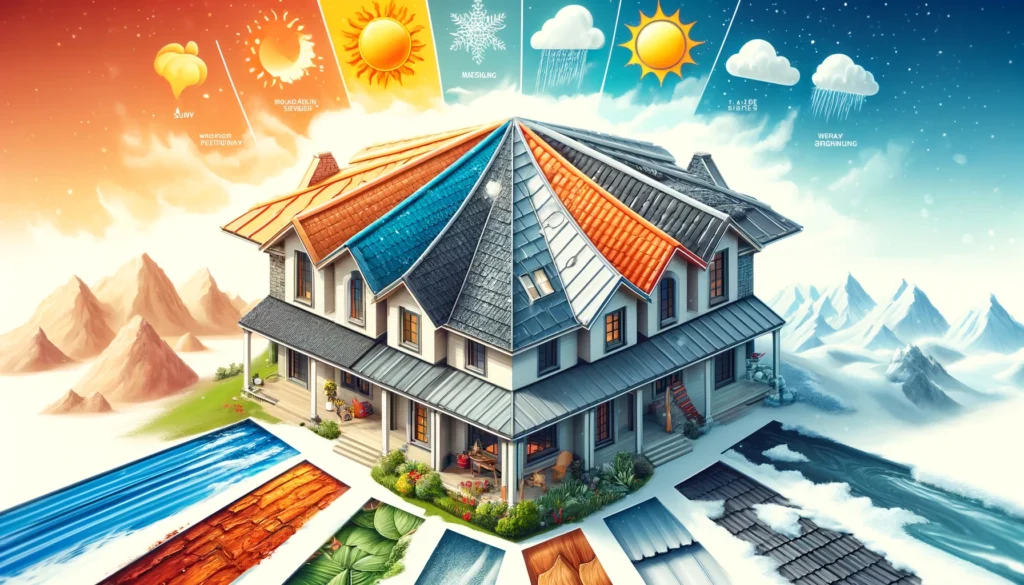Phone:
(925) 392 8321
Physical address:
3478 Buskirk Ave Suite 1000, Pleasant Hill,
CA 94523, United States

When it comes to selecting the best roofing material for your home, the local climate plays a significant role. A material that performs well in one type of weather might not be suitable for another. To help you choose the right option, we’ve compared the top five roofing materials based on their performance in different climates.
Best For: Moderate climates
Overview: Asphalt shingles are one of the most popular roofing materials in the United States. They are affordable, easy to install, and come in various colors and styles.
Climate Suitability:
Maintenance Tips:
Best For: Extreme climates (hot, cold, and coastal areas)
Overview: Metal roofing is known for its durability and longevity. It comes in various materials, including aluminum, steel, and copper, and can be installed in sheets or shingles.
Climate Suitability:
Maintenance Tips:
Best For: Hot and arid climates
Overview: Clay and concrete tiles offer a distinctive look and are highly durable. They are heavier than other roofing materials, so the roof structure must be able to support the weight.
Climate Suitability:
Maintenance Tips:
Best For: Cold and wet climates
Overview: Slate roofing is one of the most durable and long-lasting roofing materials available. It offers a classic and elegant appearance.
Climate Suitability:
Maintenance Tips:
Best For: Moderate and dry climates
Overview: Wood shingles and shakes provide a natural, rustic appearance. They are typically made from cedar, redwood, or pine.
Climate Suitability:
Maintenance Tips:
Selecting the right roofing material for your climate is essential to ensure the longevity and efficiency of your roof. Asphalt shingles are versatile for moderate climates, while metal roofing stands out in extreme conditions. Clay and concrete tiles excel in hot, dry areas, slate is perfect for cold and wet climates, and wood shingles are best suited for moderate, dry regions. Always consider your local weather patterns and consult with a professional roofer to make the best decision for your home.
